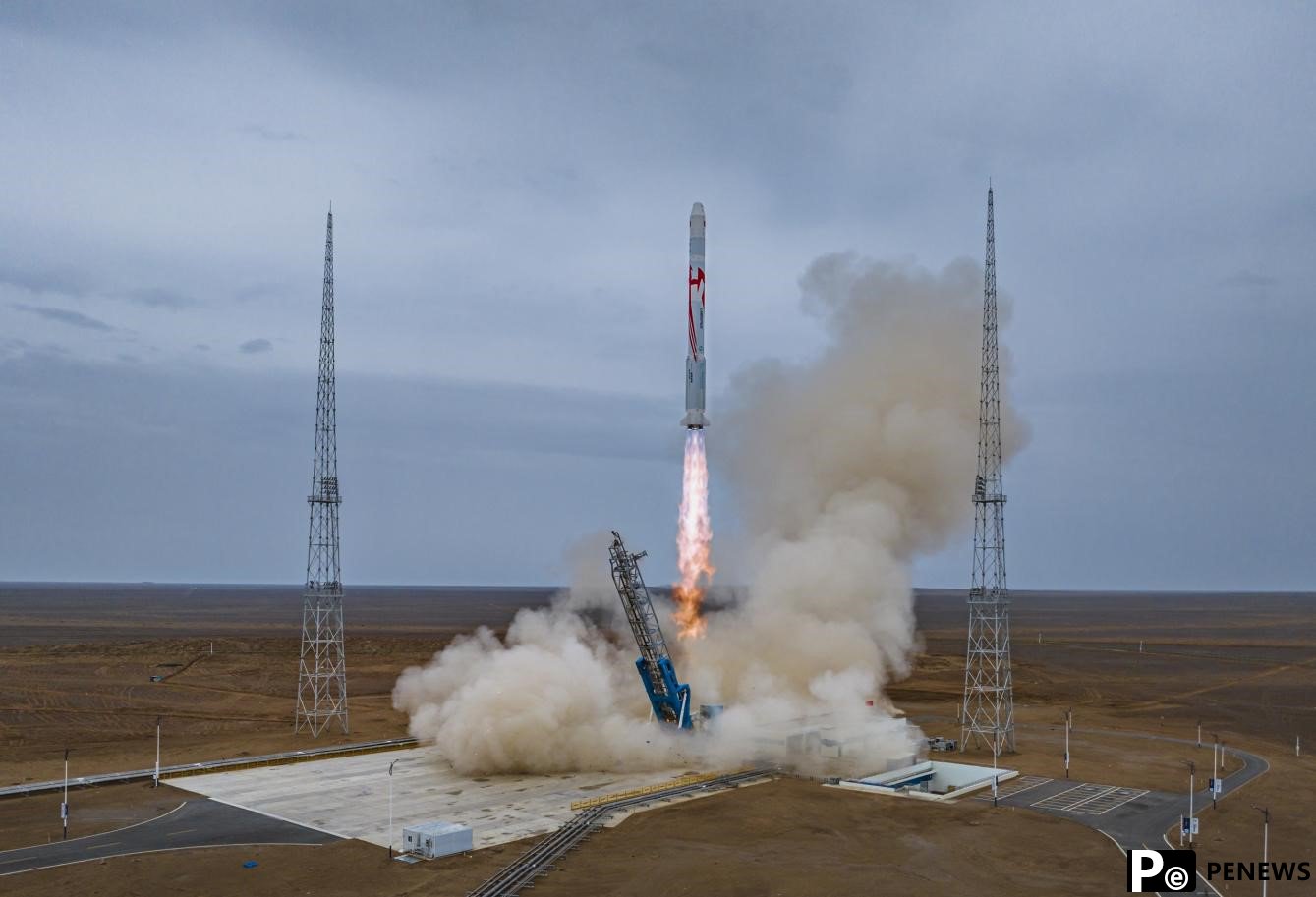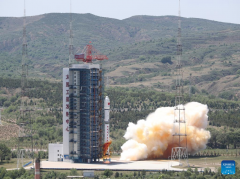Home>>
China's commercial space industry embraces rapid growthBy Liu Shiyao (People's Daily) 16:42, March 15, 2024
At the beginning of 2024, a carrier rocket developed by Chinese commercial aerospace company OrienSpace blasted off from waters off the coast of Haiyang in east China's Shandong province, sending three satellites into the planned orbit.
The Gravity-1 commercial carrier rocket is the world's largest solid-propellant launch vehicle. Through technological innovation, its payload capacity has been expanded from 1 or 2 tons to 5 or 6 tons, while the launch costs have been reduced by over 30 percent.

The Zhuque-2 carrier rocket independently developed by Chinese private space launch provider LandSpace blasts off from the Jiuquan Satellite Launch Center in northwest China on July 12, 2023. It is the world's first rocket powered by liquid oxygen-methane fuel and successfully entered its planned orbit. (Photo from the official website of LandSpace)
The launch vehicle has facilitated the deployment of large-scale satellite constellations, enhanced China's capacity for diversified and large-scale launches of medium- and low-orbit satellites and enriched the country's launch vehicle variety.
The successful launch of the Gravity-1 rocket was a miniature of the rapid development of China's commercial spaceflight.
Commercial spaceflight refers to the participation in the development of the space industry through commercial operations under market principles. It aims at exploring new mechanisms for the marketization and commercialization of national civil space infrastructure.
In recent years, China's commercial space industry has transitioned from its initial stage to a period of rapid growth, becoming an important complement to the country's space endeavors.
According to a recently published blue paper, in 2023, a total of 26 commercial launches were completed (including rideshare and co-passenger launches), which accounted for 39 percent of China's total launches for the year. Among them, 25 were successful, marking a success rate of 96 percent.
Experts noted that China's commercial space industry has witnessed vigorous growth, emerging from its infancy to become a thriving sector. The industry has preliminarily established an industrial system and market system.
Today, a number of private companies have entered various segments of the commercial space sector, including rocket launches, satellite manufacturing, and satellite application services. Each leading commercial spaceflight enterprise has shown its own characteristics and development trends in areas such as rocket and satellite development, constellation deployment, and data services.
A relatively flexible market mechanism would contribute to technological exploration and innovation in the commercial space industry.
Last year, China launched a Long March-2D rocket to place 41 satellites, including the Jilin-1 Gaofen 06A developed by the Chang Guang Satellite Technology Co., Ltd., in orbit, setting a domestic record for the most satellites lifted in one go.
The Zhuque-2 carrier rocket independently developed by Chinese private space launch provider LandSpace was successfully launched, becoming the world's first rocket powered by liquid oxygen-methane fuel to be successfully launched in a row.

The Gravity-1 carrier rocket developed by Chinese commercial launch vehicle designer and manufacturer OrienSpace is launched from waters off the coast of Haiyang, east China's Shandong province, Jan. 11, 2024. (People's Daily Online/Ding Yi)
Beijing Interstellar Glory Space Technology Ltd., better known as iSpace, completed the second flight test mission for its commercial reusable rocket SQX-2Y, the first reuse of such a rocket in China.
These achievements demonstrate the diverse research and development routes and directions of innovation of commercial space exploration, effectively promoting the overall progress of space technology.
With the help of satellite communication, it is now possible to make phone calls and send messages even in uninhabited areas. Commercial low-orbit satellites can immediately provide image coverage of the ground after earthquakes and other disasters, supporting emergency rescue efforts.
Zhong Xing, chief designer of Chang Guang satellites, said commercial remote sensing satellites have made China a world-class participant in remote sensing data acquisition. The price of satellite remote sensing data obtaining service has dropped from several hundred yuan to just over 10 yuan per square kilometer.
Zhong believes that the commercial space industry can help lower satellite launch costs and improve launch efficiency, thus contributing to large-scale satellite launches and faster constellation deployment, and better facilitating the economy, society, and people's lives.









